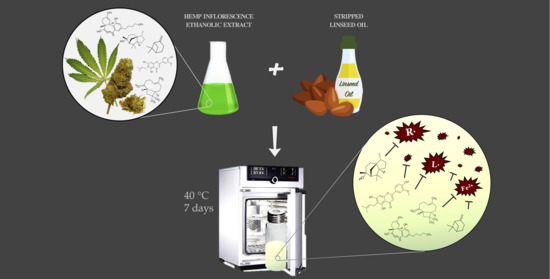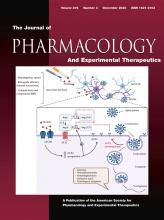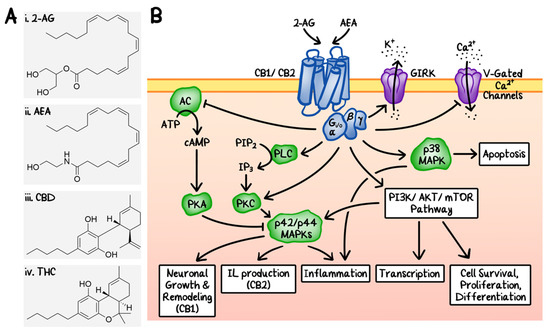 “Background: Frontotemporal dementia (FTD) is characterized by progressive deterioration in behaviors, executive function and/or language. The behavioral variant (Bv) is characterized by disinhibition and obsessive/compulsive behaviors. These symptoms are sometimes resistant to medications. This series examines patients suffering with treatment-resistant Bv-FTD who were prescribed cannabinoid and related compounds for other indications.
“Background: Frontotemporal dementia (FTD) is characterized by progressive deterioration in behaviors, executive function and/or language. The behavioral variant (Bv) is characterized by disinhibition and obsessive/compulsive behaviors. These symptoms are sometimes resistant to medications. This series examines patients suffering with treatment-resistant Bv-FTD who were prescribed cannabinoid and related compounds for other indications.
Case presentation: Three FTD cases from a dementia clinic were identified. These patients had disability due to behavior despite typical pharmacologic management. These patients were prescribed marijuana for comorbidities (anxiety, insomnia and pain). In all cases, use of cannabinoid products showed significant improvements in behavior and in the primary indication for prescription.
Conclusion: Review of these cases demonstrates potential for the use of cannabinoids in the management of treatment-resistant Bv-FTD.”
https://pubmed.ncbi.nlm.nih.gov/33190583/
“Frontotemporal dementia is a complicated and difficult disease that can be challenging to manage and often leads to significant burden on caregivers. Sometimes management of behavioral changes is difficult even with medications. In this case series, we report three cases of patients with behavior that was resistant to typical treatment who showed improvement in behavior when they were prescribed medical marijuana for other reason.”

 “The increasing legalization of Cannabis for recreational and medicinal purposes in the United States has spurred renewed interest in the therapeutic potential of cannabinoids (CBs) for human disease.
“The increasing legalization of Cannabis for recreational and medicinal purposes in the United States has spurred renewed interest in the therapeutic potential of cannabinoids (CBs) for human disease. “The ability of hemp (Cannabis sativa L.) inflorescence extract to counteract lipid oxidation was studied in stripped linseed oil.
“The ability of hemp (Cannabis sativa L.) inflorescence extract to counteract lipid oxidation was studied in stripped linseed oil.
 “Cannabis has been used as a medicine for millennia. Prohibition in the mid-20th century precluded early scientific investigation.
“Cannabis has been used as a medicine for millennia. Prohibition in the mid-20th century precluded early scientific investigation. “Medical cannabis and individual cannabinoids, such as tetrahydrocannabinol (THC) and cannabidiol (CBD), are receiving growing attention in both the media and the scientific literature. The Cannabis plant, however, produces over 100 different cannabinoids, and cannabigerol (CBG) serves as the precursor molecule for the most abundant phytocannabinoids.
“Medical cannabis and individual cannabinoids, such as tetrahydrocannabinol (THC) and cannabidiol (CBD), are receiving growing attention in both the media and the scientific literature. The Cannabis plant, however, produces over 100 different cannabinoids, and cannabigerol (CBG) serves as the precursor molecule for the most abundant phytocannabinoids. “Recently, cannabinoids, such as cannabidiol (CBD) and Δ9 -tetrahydrocannabinol (THC), have been the subject of intensive research and heavy scrutiny. Cannabinoids encompass a wide array of organic molecules, including those that are physiologically produced in humans, synthesized in laboratories, and extracted primarily from the Cannabis sativa plant. These organic molecules share similarities in their chemical structures as well as in their protein binding profiles. However, pronounced differences do exist in their mechanisms of action and clinical applications, which will be briefly compared and contrasted in this review. The mechanism of action of CBD and its potential applications in cancer therapy will be the major focus of this review article.”
“Recently, cannabinoids, such as cannabidiol (CBD) and Δ9 -tetrahydrocannabinol (THC), have been the subject of intensive research and heavy scrutiny. Cannabinoids encompass a wide array of organic molecules, including those that are physiologically produced in humans, synthesized in laboratories, and extracted primarily from the Cannabis sativa plant. These organic molecules share similarities in their chemical structures as well as in their protein binding profiles. However, pronounced differences do exist in their mechanisms of action and clinical applications, which will be briefly compared and contrasted in this review. The mechanism of action of CBD and its potential applications in cancer therapy will be the major focus of this review article.”
 “The aberrant accumulation of disease-specific protein aggregates accompanying cognitive decline is a pathological hallmark of age-associated neurological disorders, also termed as proteinopathies, including Alzheimer’s disease, Parkinson’s disease, Huntington’s disease, amyotrophic lateral sclerosis and multiple sclerosis.
“The aberrant accumulation of disease-specific protein aggregates accompanying cognitive decline is a pathological hallmark of age-associated neurological disorders, also termed as proteinopathies, including Alzheimer’s disease, Parkinson’s disease, Huntington’s disease, amyotrophic lateral sclerosis and multiple sclerosis. “Cannabidiol (CBD) is a non-psychoactive phytocannabinoid known for its beneficial effects including antioxidant and anti-inflammatory properties. Moreover, CBD is a compound with antidepressant, anxiolytic, anticonvulsant and antipsychotic effects. Thanks to all these properties, the interest of the scientific community for it has grown.
“Cannabidiol (CBD) is a non-psychoactive phytocannabinoid known for its beneficial effects including antioxidant and anti-inflammatory properties. Moreover, CBD is a compound with antidepressant, anxiolytic, anticonvulsant and antipsychotic effects. Thanks to all these properties, the interest of the scientific community for it has grown. “This article retraces the story of cannabis from the earliest contacts of humans with the plant to its subsequent global expansion, its medicinal uses, and the discovery of the endocannabinoid system in the 20th century. Cannabis was attested to around 12 000 years ago near the Altai Mountains in Central Asia, and since then, cannabis seeds have accompanied the migration of nomadic peoples. Records of the medicinal use of cannabis appear before the Common Era in China, Egypt, and Greece (Herodotus), and later in the Roman empire (Pliny the Elder, Dioscorides, Galen). In the 19th century, orientalists like Silvestre de Sacy, and Western physicians coming into contact with Muslim and Indian cultures, like O’Shaughnessy and Moreau de Tours, introduced the medicinal use of cannabis into Europe. The structure of the main psychoactive phytocannabinoid, tetrahydrocannabinol (THC), was determined in Israel by Mechoulam and Gaoni in 1964. This discovery opened the gate for many of the subsequent developments in the field of endocannabinoid system (ECS) research. The advances in the scientific knowledge of the ECS place the debate on cannabis liberalization in a new context.”
“This article retraces the story of cannabis from the earliest contacts of humans with the plant to its subsequent global expansion, its medicinal uses, and the discovery of the endocannabinoid system in the 20th century. Cannabis was attested to around 12 000 years ago near the Altai Mountains in Central Asia, and since then, cannabis seeds have accompanied the migration of nomadic peoples. Records of the medicinal use of cannabis appear before the Common Era in China, Egypt, and Greece (Herodotus), and later in the Roman empire (Pliny the Elder, Dioscorides, Galen). In the 19th century, orientalists like Silvestre de Sacy, and Western physicians coming into contact with Muslim and Indian cultures, like O’Shaughnessy and Moreau de Tours, introduced the medicinal use of cannabis into Europe. The structure of the main psychoactive phytocannabinoid, tetrahydrocannabinol (THC), was determined in Israel by Mechoulam and Gaoni in 1964. This discovery opened the gate for many of the subsequent developments in the field of endocannabinoid system (ECS) research. The advances in the scientific knowledge of the ECS place the debate on cannabis liberalization in a new context.”